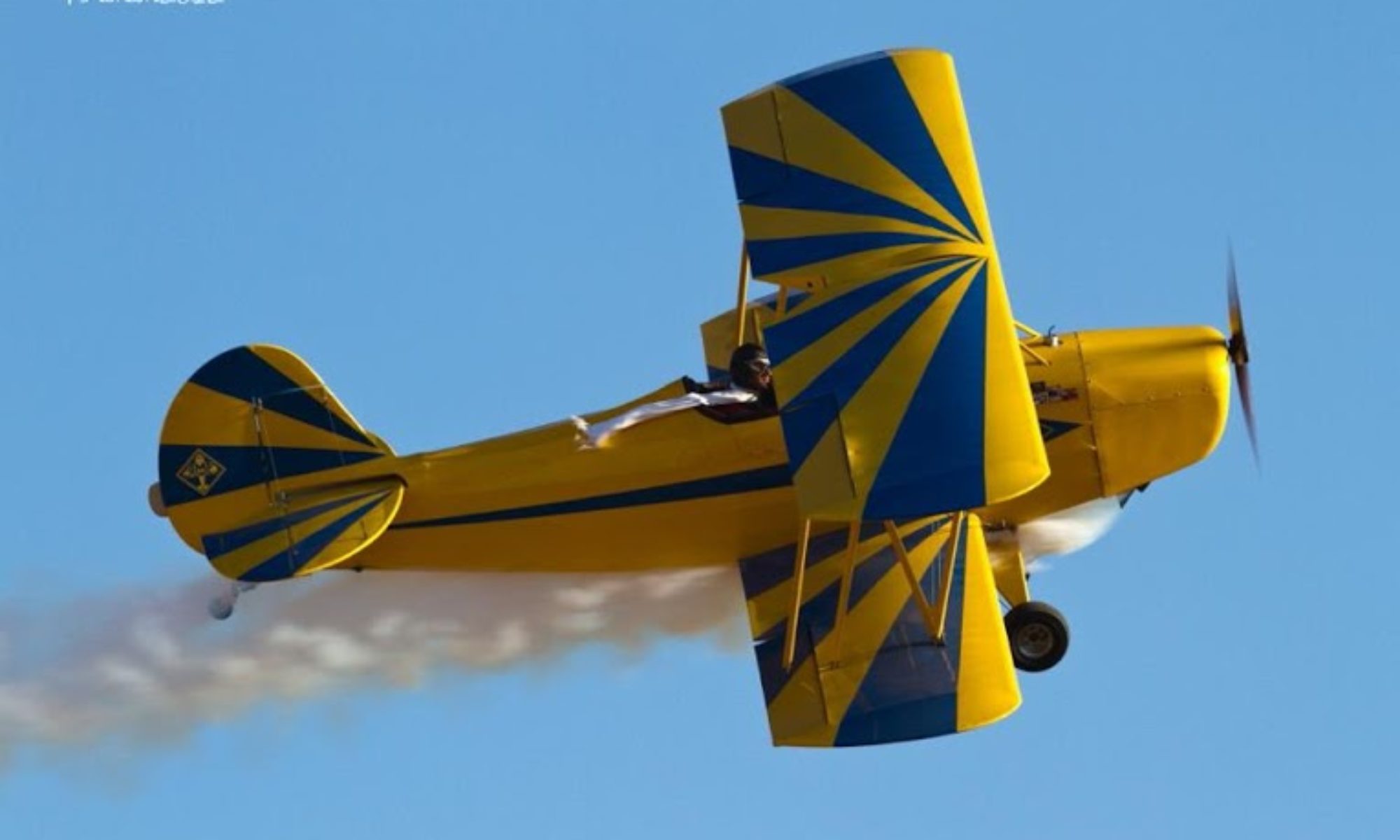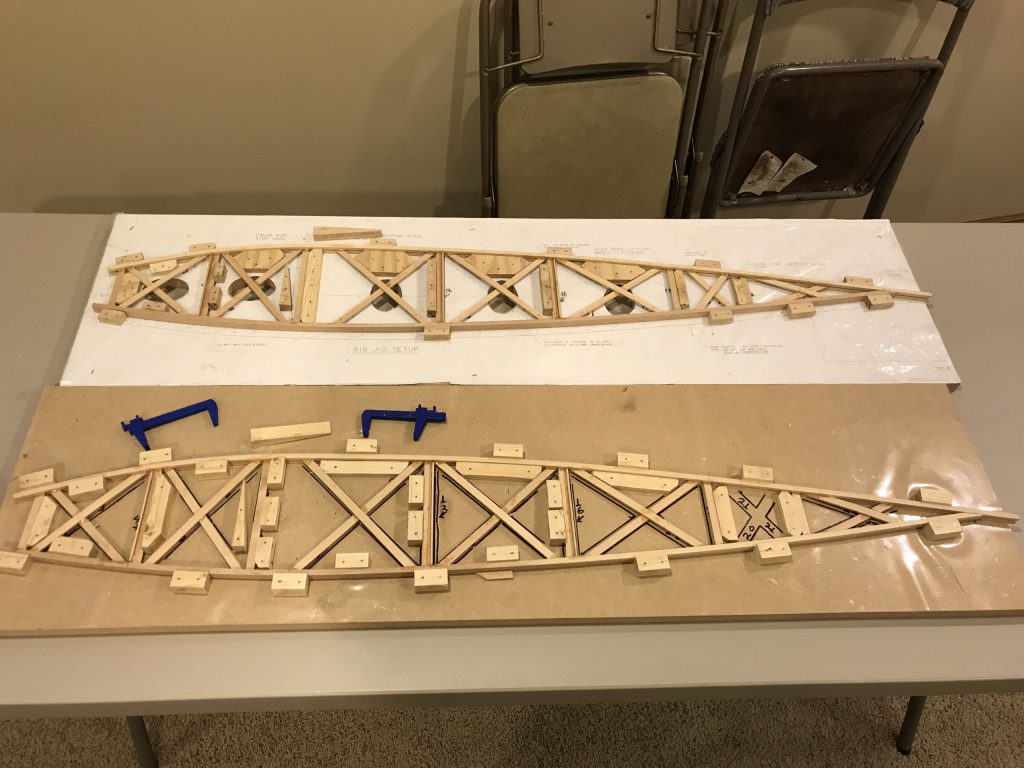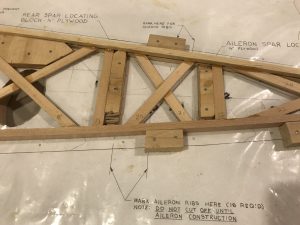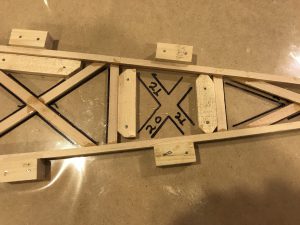I got two false ribs glued up last night and pulled them from the forms today. The new razor saw arrived yesterday afternoon, so that was nice to have. I’m leaving all of the ends of the top and bottom capstrips a little long. I am planning to just build a sled for the table saw out of MDF, with dowel pins or wood blocks to locate the ribs for the four cuts I’ll need, referenced to the main spar and rear spar. That’s one cut for the nose, one for the trailing edge, and two for the tail ends of the false ribs. That can wait until all of the ribs are finished, maybe later depending on how cold & crowded it is in the garage. They really don’t NEED to be trimmed until I’m ready to assemble the wings, so that may be a while yet.
I figure I’ll get two, maybe three false ribs out of a pair of capstrips that would make one regular rib, so I’ll have plenty of opportunity to use whatever method I do finally end up using to pre-bend the wood. Over the past couple of nights I’ve tried a couple of methods of bending capstrip. The other night I ran a bucket of the hottest water I could get from the tap. It was probably 140 F or so, coming from a bar sink just a few feet from the water heater. I put half a dozen capstrip pieces in there, let them soak a couple of hours, and put them on the bending forms. That seemed to work well, with no broken pieces.
Last night I added a gallon or so of hot water to the bucket, just to top it off some more. The water would have been lukewarm at best. I soaked another half dozen strips for 12 hours or so. Of the six, one snapped as I was bending it in the form. That’s about what happened the last time I tried soaking in cold water, so obviously that’s a waste of time and good spruce. Won’t make that mistake again.



